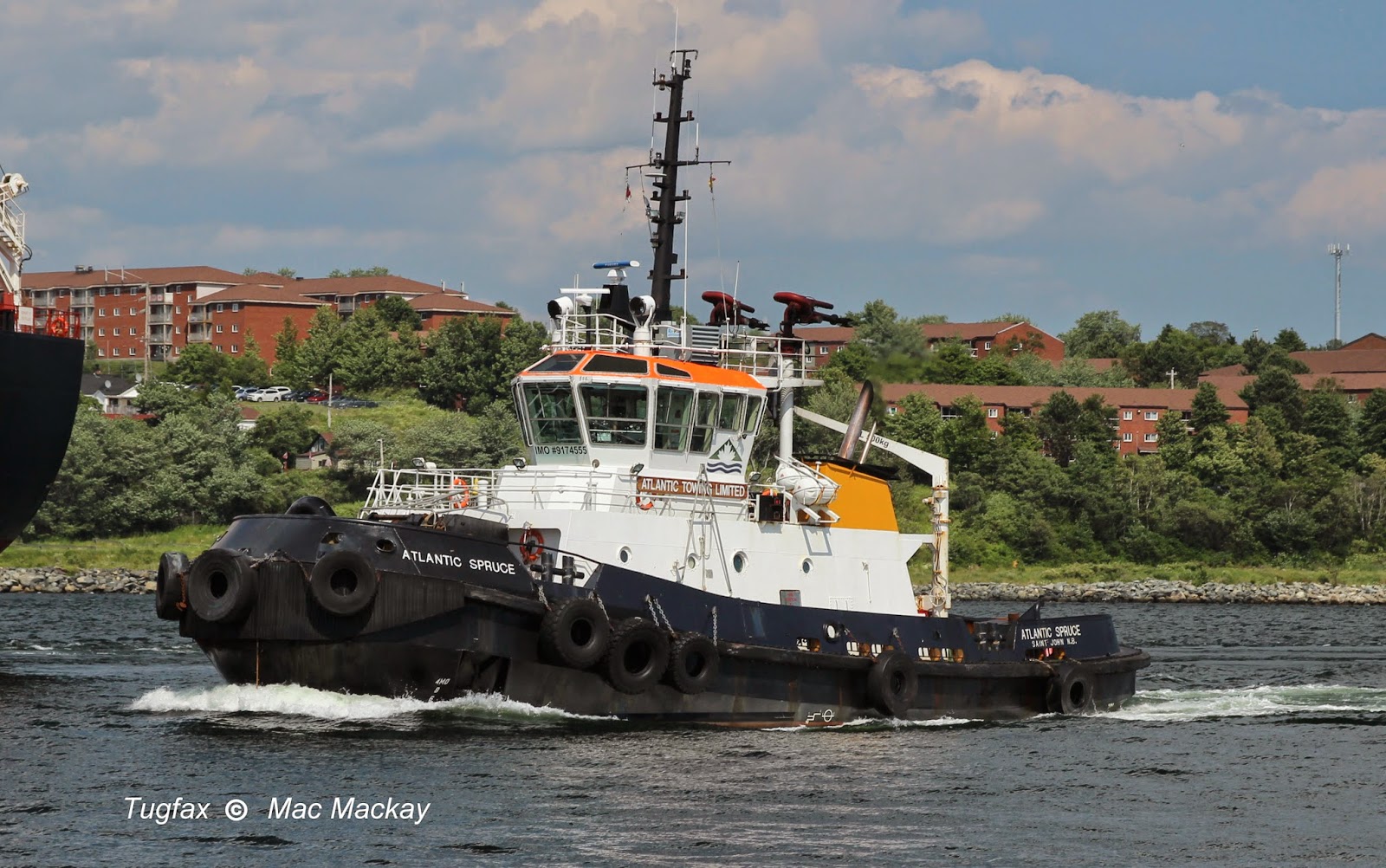OLD
The veteran tug/supplier Riverton
has left the Canadian flag after a memorable career. Built in 1975
Scheepsw. “De Waal” in Zaltbommel, Netherlands as Smit-Lloyd
112 it was powered by a pair of
6 cyl Werkspoors delivering 7,500 bhp through twin screws with
controllable pitch props and two thrusters.
It
worked under the Dutch flag for Smit-Lloyd until 1989 when it was
acquired by the Royal Canadian Navy. Arriving in Halifax March 29,
1989 it went into refit in Dartmouth and emerged as Riverton.
The second tug of the name in the RCN, it was used for a variety of
chores including target towing, but rarely if ever did a major tow.
There
was some controversy when it was acquired as several Canadian vessels
were available, but were passed over in favour of the Dutch ship, and later when the RCN acquired two more suppliers from foreign owners (even though Anticosti and Moresby were Canadian built).
Prime among the objectors was Secunda Marine Services. In 1997 when
the RCN decided they didn't need Riverton
anymore it was chartered to Secunda, and without name change, it
served them until 2002. Interestingly as a naval vessel, it was not
registered. On return to the RCN it was laid
up. During its RCN career it carried pennant numbers AGOR 121 and ATA
121.
In
2002 it was sold to Cape Harrison Marine of St.John's and did odd
jobs including some barge towing and seismic standby in addition to
offshore work.
On
March 27 its Canadian register was closed and it hoisted the Panama
flag. Its new owners are listed as Yacht Bilgin Shipyard Europe of
Funchal, Madeira. It has since sailed for the Mediterranean.
NEW
Newly
registered on July 22 is Maersk Clipper,
the latest newbuilding for Maersk Supply Service Canada. From Ast. y
Servicos Navale SA of Santiago, Chile, the big boat measures 6,490
gross tons and wields 13,800 bhp. It will be delivered later this
year. (I suspect that bhp rating is about 4,000 bhp understated.)
Atlantic
Towing has also taken delivery of their newest supplier Atlantic
Merlin June 26. Built as Jaya
Sovereign it measures 6200 bhp
and shows 16,300 bhp. It is a sister to Atlantic Kestrel
(ex Jaya Supreme)
delivered in 2012.
Atlantic
Towing limited has also ordered four platform supply vessels
(without towing or anchor handling capability) from Damen in the
Netherlands for delivery starting in 2016.
Not
to be left out Secunda Marine Services has ordered a supplier from
Poland.
PULLOUT
The
biggest tug operation ever to take place in eastern Canada took place
last week with little fanfare. The 180,000 tonne Gravity Base
Structure (GBS) for the Hebron offshore oil field was built in an
enclosed earthen drydock at Bull Arm. The Dutch dredge Leonardo
da Vinci was called in to
dredge out the bund wall allowing the area to fill with seawater.
It
took 10 hours on July 22 for a flotilla of tugs to pull the base out
into deeper water in Trinity Bay. It was then anchored where it will
be extended to full height (thus increasing its draft considerably).
Top sides structures and components under construction as far away as
Stephenville and Halifax will be barged in for placement over the
coming year. McKeil Marine has assembled a large fleet of barges for this work, some new and other purchased.
While at anchor, the GBS will be serviced by a number of
speedy former Quebec passenger craft (see recent posting on Shipfax).
By my
count the following tugs were involved
in one way or another in the pull out:
Océan A. Simard,
Océan Serge Genois,
Océan Bertrand Jeansonne,
Océan Ross Gaudreault,
Océan Arctique,
Océan Stevns,
Escorte;
Atlantic Hemlock,
Atlantic Larch,
and the tug/suppliers Venture Sea
and Havila Venus.























.jpg)











